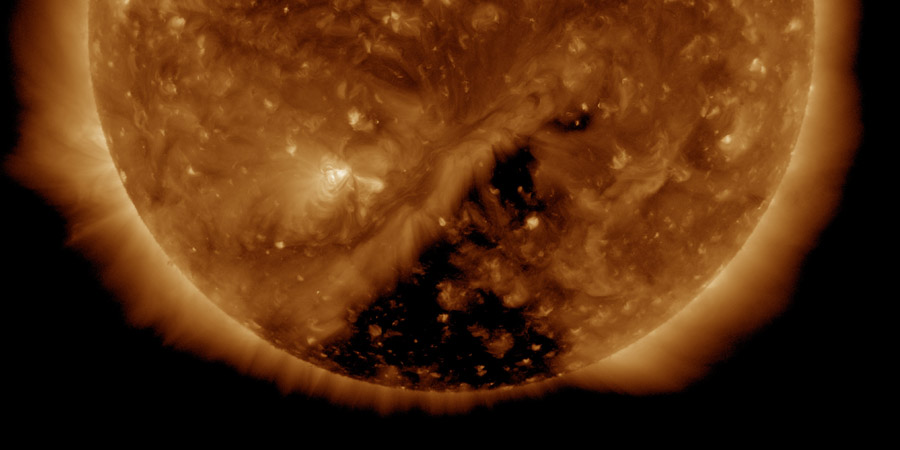Coronal hole faces Earth
Friday, 12 February 2021 13:02 UTC

Are we all ready for Valentine's Day? Got flowers, chocolate or perhaps that new car she's been talking about all year? No? No idea yet what to do with your loved one? How about watching aurora dancing above your heads? Pretty romantic right! That might be possible in a few days if you are a high latitude sky watcher because we have a coronal hole facing our planet today! We are talking about a northern extension of the southern hemisphere coronal hole and the high speed solar wind stream flowing from this coronal hole could arrive at our planet this Sunday, 14 February. Active geomagnetic conditions (Kp4) will be possible when the stream arrives.
But that is not all. Just above the coronal hole we see a filament channel. It is hard to see but if you look at the header image (SDO/AIA 193Å) you see a dark line going from the south-east to the north-west. It follows the eastern most border of the coronal hole. That is the filament.
What is a filament you ask? Solar filaments are clouds of ionized gas above the solar surface squeezed between magnetic regions of opposite polarity. When these structures become unstable they can collapse or break away from the Sun. When they break away from the Sun and escape the Sun's gravity we see a coronal mass ejection which could cause geomagnetic storming at Earth providing the cloud has an earth-directed component. Be sure to read this help article to learn more.
So yeah, no sunspot activity worth mentioning at the moment but still two interesting solar features to keep an eye on in the days ahead!
Thank you for reading this article! Did you have any trouble with the technical terms used in this article? Our help section is the place to be where you can find in-depth articles, a FAQ and a list with common abbreviations. Still puzzled? Just post on our forum where we will help you the best we can!
Latest news
Latest forum messages
Support SpaceWeatherLive.com!
A lot of people come to SpaceWeatherLive to follow the Sun's activity or if there is aurora to be seen, but with more traffic comes higher server costs. Consider a donation if you enjoy SpaceWeatherLive so we can keep the website online!

Space weather facts
| Last X-flare | 2024/03/28 | X1.1 |
| Last M-flare | 2024/04/24 | M2.0 |
| Last geomagnetic storm | 2024/04/19 | Kp7 (G3) |
| Spotless days | |
|---|---|
| Last spotless day | 2022/06/08 |
| Monthly mean Sunspot Number | |
|---|---|
| March 2024 | 104.9 -19.8 |
| Last 30 days | 128.8 +21.5 |


